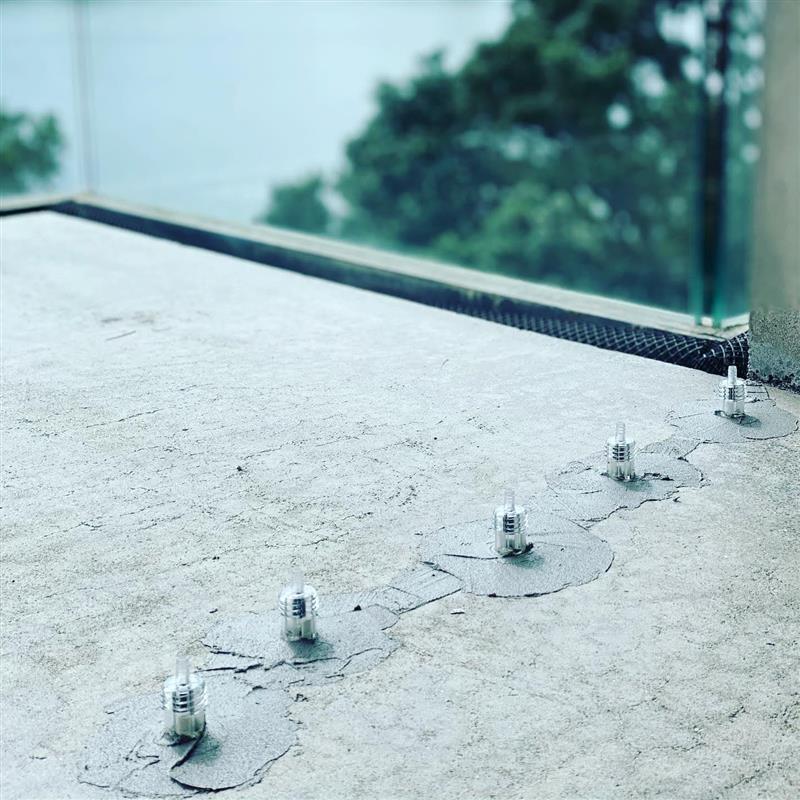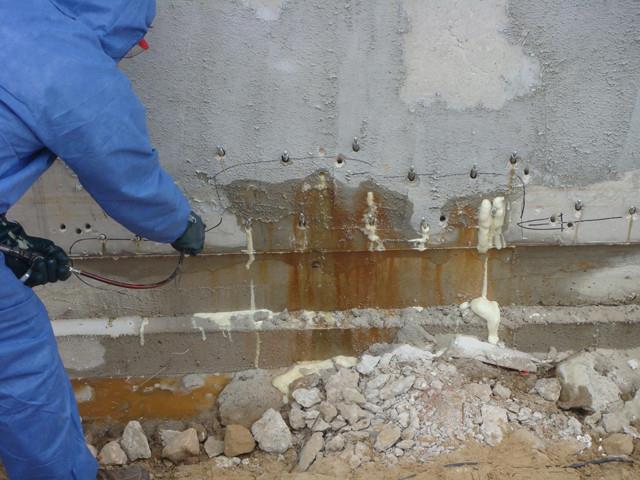


Not coming from one specific point or crack – TBC – Get in touch for a free obligation visit.

Epoxy crack injection is a process of repairing cracks in concrete structures by injecting an epoxy resin into the crack. The resin then hardens and creates a bond that restores the structural integrity of the concrete.
Epoxy crack injection can be used to repair cracks in a variety of concrete and masonry structures, including houses, buildings, bridges, driveways, parking garages, and more.
The epoxy resin typically hardens within a few hours, although the exact time can depend on factors such as temperature and humidity.
Sometimes once the epoxy has hardened, it can be sanded and painted to match the surrounding area, this service does cost extra and will need to be on a case by case basis.
While no repair method can guarantee that a crack will never reappear, epoxy crack injection can be a long-lasting and effective solution that prevents further damage to the structure.
Polyurethane crack injection is a process of repairing cracks in concrete structures by injecting a polyurethane resin into the crack. The expanding nature of the resin helps to fill the void and create a strong, long-lasting bond that restores the structural integrity of the concrete.
Polyurethane crack injection can be used to repair cracks in a variety of concrete structures, including walls, floors, and other areas where movement or water infiltration is a concern.
The polyurethane resin reacts with moisture in the crack and expands, filling the void and creating a bond that restores the structural integrity of the concrete. The expanding nature of the resin also creates a water-resistant seal that helps to prevent further damage to the structure.
An acrylic injection system is a process of repairing cracks in concrete structures by injecting an acrylic resin into the crack. The resin reacts with moisture in the crack and hardens, filling the void and creating a bond that restores the structural integrity of the concrete. Acrylic injection systems can also be used as a waterproofing solution for concrete structures.
A curtain injection system is a process of creating a waterproof barrier in concrete structures by injecting a liquid sealant into the soil surrounding the structure. The sealant solidifies and creates a curtain-like barrier that prevents water from penetrating the concrete. Curtain injection systems are often used to waterproof underground structures such as basements, tunnels, and subways.
Acrylic injection systems are used to repair cracks and other minor damage in concrete structures, while curtain injection systems are used to prevent water infiltration in underground structures. Acrylic injection systems involve injecting a resin directly into the crack, while curtain injection systems involve injecting a liquid sealant into the soil surrounding the structure.
Acrylic injection systems can be used to repair cracks and other damage in a variety of concrete structures, while curtain injection systems are typically used for waterproofing underground structures such as basements, tunnels, and subways.
Yes, both acrylic and curtain injection systems can be effective repair and waterproofing solutions for concrete structures. The effectiveness of the systems depends on the extent of the damage and the quality of the materials and installation.
Yes, it is important to hire a professional with experience in acrylic and curtain injection systems. Improper installation can result in ineffective repairs or waterproofing, and may even cause further damage to the structure.